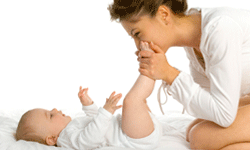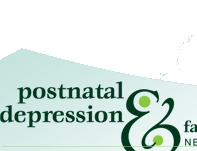
Anxiety
Anxiety is a normal reaction to stress and some amount of anxiety can be good.
It helps you respond appropriately to real danger, and it can help motivate you at work and at home.
A reasonable level of anxiety is also expected in pregnancy and following childbirth as there are many new things to learn and adjust to during this period.
However, when anxiety becomes excessive and interferes with your normal everyday life then it may be that you have an anxiety disorder and some additional help could be needed.
Anxiety often goes hand in hand with depression and is more common than  depression. Up to 20 to 30% of women experience anxiety in pregnancy and after delivery. depression. Up to 20 to 30% of women experience anxiety in pregnancy and after delivery.
The different types of anxiety disorders are discussed below.
Why do we get anxious?
When animals, including humans, become frightened they respond in one of three instinctive ways:
- By fighting (fight)
- By running away (flight) or
- By becoming very still or immobilised (freeze).
Thus fear induces either a fight, or a flight or a freeze response.
Examples in the animal kingdom include:
- Fight: The lead wolf in a pack weakens. Other wolves will fight him for dominance, he will fight back. They will keep fighting until one is clearly the winner. This occurs in many animal male hierarchies and the fight may go on to the death or until one is seriously hurt.
- Flight: A lion chasing a deer. The deer runs away putting every ounce of energy into its effort to escape.
- Freeze: Possums when threatened keep very still, or ‘play dead’ thus encouraging the threat to loose interest in them. This is where the phrase ‘playing possum’ comes from.
You may be able to think of many other examples.
Parents (usually mothers) of virtually all mammal species will respond in one of these ways if their young are threatened.
When an animal is frightened the body reacts in certain ways:
- The heart beats faster
- Blood pressure goes up
- Blood goes away from certain organs and towards muscles
- Breathing becomes more shallow,
- The mind becomes aroused and focused on the danger (but at the expense of processing other information about what is happening, people can’t “think straight”)
- Shaking and sweating occurs
- Hair stands on end and the skin gets “prickly”
- The gut gets churned up
- Adrenaline and cortisol levels go up
Fear feels awful but it helps to protect us from danger by enabling us to take evasive action. In the animal kingdom we think of this fear being caused by either a predator or by something else in the environment that is life threatening and this also applies to humans.
However, because humans are more complex they can feel fear from a greater range of circumstances.
Furthermore what may cause fear in one person may not cause fear in another person. For example an experienced tight-rope walker may feel no fear walking on a high narrow ledge; where as most of us would be petrified. An adult may not be frightened by other adults shouting angrily at each other but a child may be quite frightened.
How frightened we are in any particular situation depends on what meaning we give to the event/situation and what memories (both conscious and unconscious memories) we have of similar situations in the past.
Human Expressions of Fear
Fight: For humans fear might be expressed in physical or verbal aggression. If we respond like this when it doesn’t seem appropriate to others we alienate people.
Flight: This might manifest itself by avoiding certain situations/places or by only staying for short periods of time.
Freezing: This might manifest itself as failure to express ones thoughts or wishes at important times, or by seeming to ‘cut-off’ or by not acting to protect oneself.
Case Example
One of the authors had a minor leg deformity as an 18 month old infant. Treatment at the time was callipers, which held her legs together and made her immobile at night for several months. She needed to be held by her father, usually screaming, to go to sleep at night. As an older child and adult she did not like sleeping in sleeping bags and if anyone sat on her legs while she was in a sleeping bag she would become intensely frightened and “have” to get out of the sleeping bag and stand up (flight). She did not understand why she was like this.
The memory of her experience as a toddler was not conscious but it was still there. The sleeping bag was a trigger for the fear she had experienced earlier in life. It was only much later on in her life that she was able to make this connection between the childhood experience and her fear of sleeping bags.
Emma's Story
Emma and her husband Joel had been together for ten years and they had put off having their first baby until they had their own home and felt financially secure. Emma had worked hard for the past 17 years working up to a management role in the company. Emma planned to take 12 months maternity leave and then return to work part time. Everything was well planned and everyone told Emma that she would make a fantastic mother. Both Emma and Joel were very excited about the baby and had everything ready for the baby well ahead of time.
The birth didn’t go quite as planned as Emma had to have a caesarean section. Unfortunately, the baby needed oxygen and Emma did not get to hold her baby for an hour after she was born. Feeding was difficult to establish as baby Chloe didn’t latch on well. Emma felt the midwives weren’t very supportive and Emma was shocked that feeding could be so hard when she had thought it would come so naturally.
Emma went home after three days in hospital but still didn’t feel very confident about feeding. On top of this Chloe had reflux and was very unsettled and screamed constantly. Chloe didn’t sleep well and seemed to wake every 20-30 minutes. Emma tried everything but she didn’t know how to settle her and began to dread Chloe’s screams.
Joel was home for the first week but then he had to go back to work. He helped at night but Emma always felt guilty if he got up to Chloe because he had to work the next day. He became tired and irritable and said that Emma just needed to ‘chill out’ about it all.
Emma couldn’t believe how different things were to how she had expected them to be. She kept thinking “I should be able to cope” and comparing herself to other mothers she knew. No one else seemed to have the problems she had.
Emma also began to worry that maybe Chloe wasn’t feeding enough, as she always seemed to be bringing up her milk. Emma became more and more stressed and fixated on the amount Chloe was drinking. She also figured that if Chloe was well fed she might sleep better. The more she tried to feed her the more distressed both Chloe and Emma became.
Emma spent most of the day tearful and she worried constantly that there might be something seriously wrong with Chloe. She felt tense most of the time and every time Chloe began to cry Emma felt a rush of anxiety, her heart would race, she would begin sweating and she thought she was going to faint. Emma began to think she had made a big mistake having a baby and that she was a complete failure as a mother.
References
Abramowitz JS, Schwartz SA, Moore KM, Luenzmann KR. Obsessive-compulsive symptoms in pregnancy and the puerperium: a review of the literature. Journal of Anxiety Disorders 2003; 17:461-478.
Ayers S. Assessing psychopathology in pregnancy and postpartum. Journal of Psychosomatic Obstetrics and Gynaecology 2001; 22:91-102.
Bailham S, Joseph S. Post-traumatic stress following childbirth: a review of the emerging literature and directions for research and practice. Psychology, Health & Medicine 2003; 8:159-168.
Levine RE, Oandasan AP, Primeau LA, Berenson AB. Anxiety disorders during pregnancy and postpartum. American Journal of Perinatology 2003; 20:239-248.
Matthey S, Barnett B, Howie P, Kavanagh DJ. Diagnosing postpartum depression in mothers and fathers: whatever happened to anxiety? Journal of Affective Disorders 2003; 74:139-147.
Wenzel A, Haugen EN, Jackson LC, Brendle JR. Anxiety symptoms and disorders at eight weeks postpartum. Journal of Anxiety Disorders 2005; 19:295-311.
|






 depression. Up to 20 to 30% of women experience anxiety in pregnancy and after delivery.
depression. Up to 20 to 30% of women experience anxiety in pregnancy and after delivery.